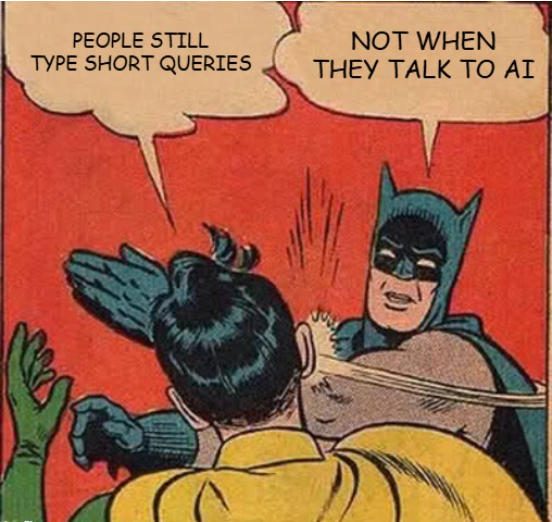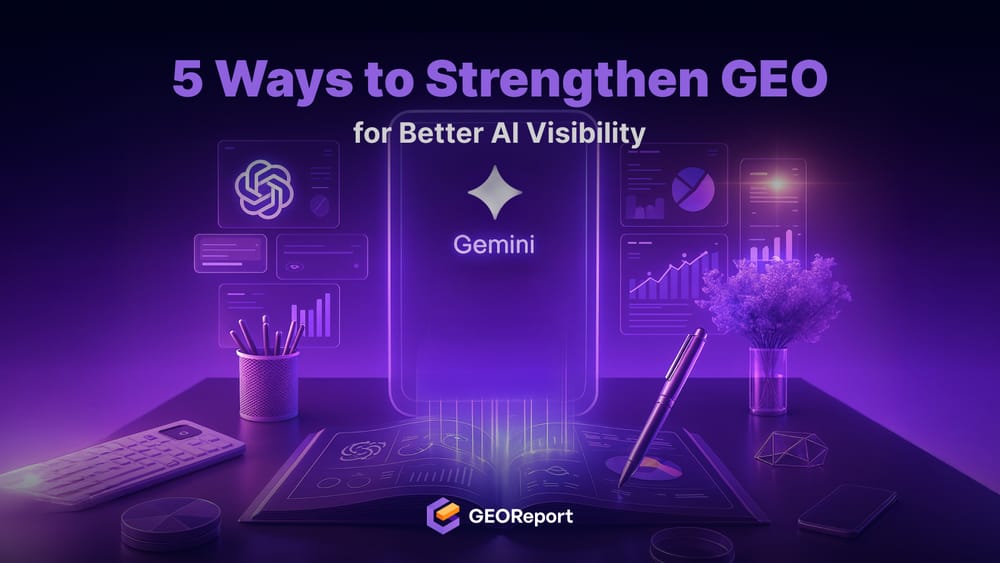BLUF:
Generative Engine Optimization (GEO) is not a buzzword. It is the framework that teaches AI systems how to trust your content. GEO does not replace SEO, it elevates it into reasoning territory. If SEO builds discovery, GEO builds credibility. And in 2025, both are inseparable for sustainable visibility in AI Search.
Why Generative Engine Optimization Matters Now
When AI Search systems like ChatGPT, Gemini, and Perplexity generate answers, they are not ranking links because they are reconstructing meaning. Your content is either used in reasoning or lost in summarization.
Marketers still obsess over impressions and backlinks. But AI doesn’t care about page one. It cares about truth, clarity, and reasoning structure. That’s why GEO is not about being found, it’s about being understood.
Fact check: Even Google’s Search Generative Experience (SGE) still depends on SEO signals like crawlability, freshness, and schema markup.
Generative systems learn from the open web, not outside it. If your site is not technically sound, GEO can’t even begin to work.
What Makes GEO Different From SEO
| SEO Focus | GEO Focus |
|---|---|
| Optimizes for human discovery | Optimizes for AI comprehension |
| Keywords and backlinks | Reasoning flow and factual density |
| Clicks and conversions | Trust and citation likelihood |
| Metadata and structure | Semantic clarity and context depth |
| Crawlability | Reasoning reusability |
GEO does not erase SEO because it reinterprets it. Think of GEO as a translation layer between your SEO signals and AI reasoning.
Structure Content for LLMs
Search engines crawl. Generative engines reason. That means your layout must follow logical order: claim, reasoning, evidence, result.

- Each paragraph is a reasoning block.
- Each heading is a signal of context.
Example: Instead of saying “Our solution increases productivity”, write “Teams using our system reduced coordination time by 22% because workflows were unified in one dashboard.”
What is the difference? The second one can be reused by AI inside an explanation.
That is GEO writing.
Using Verified Data to Build Credibility
AI doesn’t quote enthusiasm; it quotes proof. A joint Princeton study (2024) found that pages containing verified data are 2.3× more likely to be included in AI-generated responses. Because models value data consistency over descriptive language.
Practical guidance:
- Add numbers and outcomes in every claim.
- Link to primary data or research.
- Use examples that show “why” not “what.”
In short: GEO favors logic density over keyword density.
Enhance Contextual Cohesion
Internal linking used to be for SEO navigation. Now, it’s a reasoning bridge for AI. AI engines map how ideas connect across your domain.
If your AI Search article doesn’t connect to your AI Visibility metrics or GEO fundamentals content, the model reads your ideas as fragmented.
Example: A brand that interlinked 80% of its thought leadership pages saw a 34% higher inclusion rate in multi-source answers after its GEOReport.ai audit (Q1 2025).
Therefore, AI could follow the context graph without semantic gaps.
Keeping Message Consistent
Generative systems re-crawl and retrain frequently. Outdated phrasing or conflicting statistics create semantic drift, your brand starts to mean slightly different things in each model.
To fix it:
- Review top URLs quarterly.
- Unify terminology and dates.
- Replace vague phrases (“industry-leading”) with measurable ones.
Consistency keeps your meaning stable across models.
Optimizing for Conversational Queries
GEO success comes from aligning with how people prompt AI. Users now type “What are the most trusted analytics tools in 2025?”, not “analytics tools 2025.”
Generative engines parse question syntax, context, and tone.

To optimize:
- Turn key topics into Q&A format.
- Use conversational phrasing in headings.
- Include direct answers below each question.
This improves both AI comprehension and snippet-level visibility on traditional search.
Case Study: HubSpot’s GEO-Driven Visibility Lift
In 2024, HubSpot shifted from SEO-first to GEO-informed publishing. Each article was restructured with factual logic, interlinked reasoning, and verified datasets.
GEOReport.ai tracked a 2.4× increase in reasoning inclusion across ChatGPT and Perplexity within three months. Traffic grew slower than citations but authority in AI answers multiplied.
SEO drives reach; GEO builds retention.
Common GEO Mistakes to Avoid
- Writing conversationally but removing schema and metadata.
- Overusing keywords inside long-form content.
- Publishing AI-generated posts without evidence or sourcing.
- Ignoring internal linking between reasoning clusters.
- Treating GEO like a trend instead of a long-term visibility layer.
GEO is not a campaign. It’s the structure your next campaigns rely on.
How to Measure GEO Progress
To measure real progress in Generative Engine Optimization, clarity matters more than complexity. You don’t need to decode dozens of metrics, you need to know if AI is starting to understand, trust, and reuse your content.
- Your current GEO Score: a visibility snapshot showing how well your website performs across AI Search systems.
- Actionable recommendations: guidance tailored to your site structure, content format, and factual consistency.
- Step-by-step fixes: clear treatments showing what to adjust, rewrite, or link next to improve reasoning inclusion.
- Prioritized missions: the most urgent actions you should focus on first to strengthen AI comprehension and brand stability.
- Progress tracking: visual updates that show how your reasoning visibility evolves with each improvement.
The GEO audit is designed for clarity, not complexity. It helps you understand why AI includes or ignores your pages and what exact steps will move your content from being visible to being truly used.
The Future of GEO
In 2025 and beyond, GEO and SEO will merge into a single visibility standard. AI Search is built on crawl-based indexing.
- No SEO, no data.
- No GEO, no trust.
Brands that integrate both will dominate the new visibility loop: SEO builds discovery → GEO builds credibility → AI amplifies both.
FAQs
Does GEO replace SEO?
No. GEO measures whether your SEO signals still make sense to AI reasoning.
Can I improve GEO without new content?
Yes. Start by auditing existing pages with GEOReport.ai for clarity, consistency, and reasoning structure.
How long before results appear in AI Search?
4–8 weeks is typical for reasoning inclusion to rise once you improve factual and contextual clarity.
What’s the biggest mistake marketers make with GEO?
Assuming visibility equals trust. GEO is not about being seen; it’s about being used.
Editor’s Note
Generative Engine Optimization is not the end of SEO. It is the evolution of it.
Search shows where you are. GEO shows whether you belong in the answer. Brands that master both will own the next era of digital visibility.

